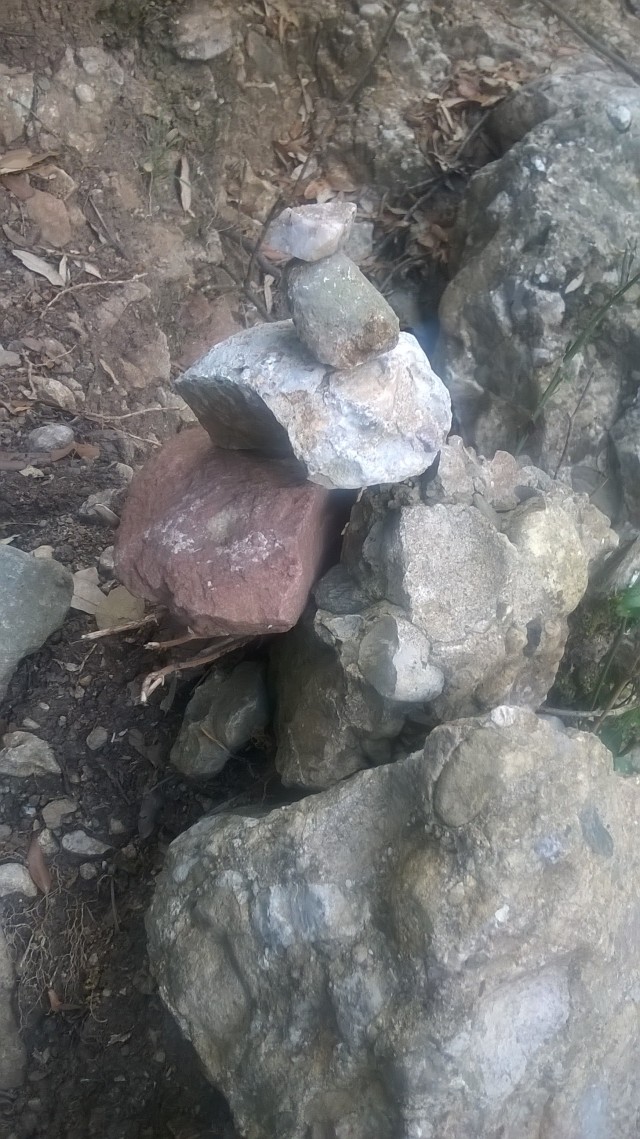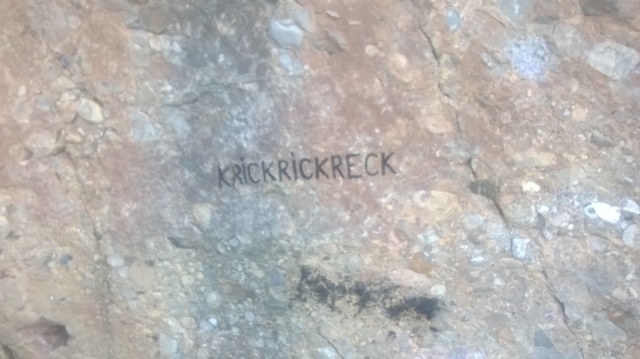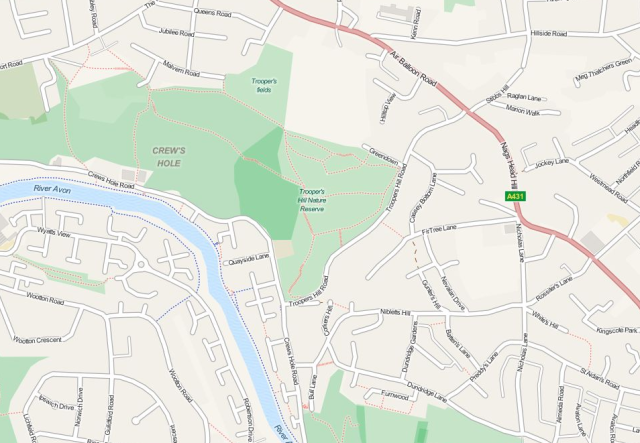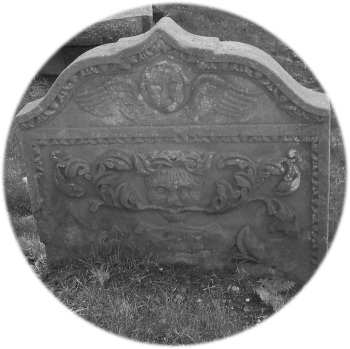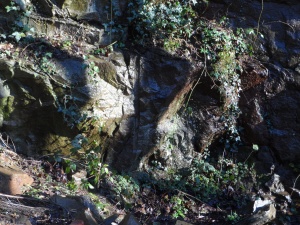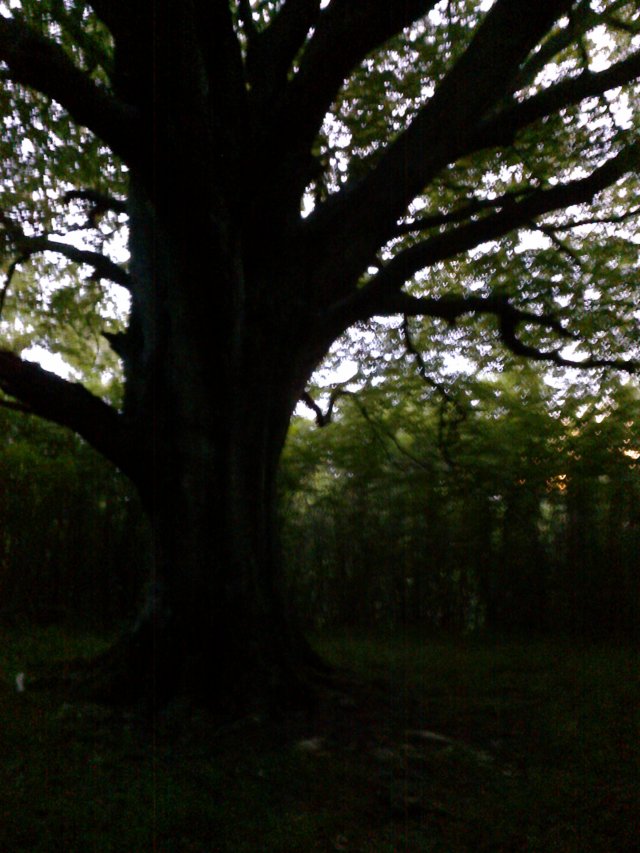Walk — 02/09/2016
A necessary day off work and still energised after my long walk along the GR4 from Montserrat to Sant Vicenç de Castellet, near Barcelona.
In the week run-up to this, I’ve been poring (pawing? pouring? pooring?) over the OS maps on Bing, Open Street Map’s becitizenized paths, and Google’s satellite images. I have a great fondness for walking from the front door. But nothing really ‘took’. The post-industrial, nature-clawing-back of the River Avon to the east is too familiar. To the north, the monotony of the suburbs; to the west: the social housing and barely-functioning industry that so often lines the edges of city centres.
No, I need a concept, something that might give me direction: a move away from the whims of personal intrigue; of willful wandering.
From the OS maps, I notice the gridlines, and we live just shy of the intersection of ST63 and ST73. That’s it: I shall follow one of these lines as closely as I can. But which way? South: it has to be. After less than 1km, I’ll need to cross the Avon, and without a huge diversion, there’s only a single option: the Avon’s oldest ferry crossing to Beese’s Riverside Bar. The bar’s only open during the summer, and so too the ferry crossing. I can follow the gridlines in other directions in the depths of winter.
Ferry. What is a ferry? I grew up landlocked; a brook opposite the house. The nearest big river was the Thames in Oxford, but we rarely went. So a ferry to me is the behemoths that run from Dover to Calais. My first shock at the non-industrial sized ferry was the 20-berth fishing boat taking people from Mallaig to Knoydart, NW Scotland. Until arriving at Mallaig, I could only picture a vast boat, with bars, amusement arcades, and vehicles. A lifetime’s conception dashed, but pleasingly so. Beese’s ferry is even smaller, carrying a maximum of six people.
* * *
So I’ve made it. In about 5 hours I’ve covered eight 1km segments, plus a bit more either end. But that’s as the crow flies (imagine: a crow flying straight!); it’s a fair bit more underfoot: a zigzagging, doubling-back meander. Now, I’m tired, my legs ache, blisters flowering. The bottoms of my jeans are heavy with water because this is not Spain, and there is rain, and there are ticks.

Paint splatter/hunting bittern/limping bull reed.
* * *
Some might like to praise the UK for its plethora of paths, taking in as they do the long distance trail as much as the quotidian and local. I, however, was not praising the quality of the path marking. I was surprised: the closer to the city (Broomhill near Beese’s; Stockwood Open Space Nature Reserve), the less likely the rights of way are to be signposted. I followed wrong paths back on myself; pushed through bramble thickets; raised my hands aloft through head-height stinging nettles — only to have to turn back. I started to rue my straight-jacket decision to follow the fictions of the Ordnance Survey’s Cartesian cross-lines. Wouldn’t it be much nicer to have a walk at a beauty spot? What is this going to prove, anyway?
But I stuck with it. Of course I did.
I have lots of ideas, most of them fleeting, but if I get as far as starting the journey, I’m loathe to abandon. Even the unexpected rain (that went from fairy mist to persisting-it-down), did not tear me from my aim. And so much the better.
It’s peculiar, following the lines. The walk can be categorised into three scenes: 1 — suburban Bristol; 2 — single-track country lanes; 3 — field footpaths. Because I had the schema, I missed most of the villages on the way. I ignored the most intriguing-looking paths. I merely chose the route that allowed me to follow line ST63 most closely.
It took a long time to feel I’d left Bristol and its conurbations. For every leaf-dappled lane, every overgrown path, there followed as much in the way of post-war bungalows and social housing, bus stops and convenience stores. Horseworld was especially confusing — a sanctuary for diseased horses (according to one sign, feeding the horses is forbidden because they may transfer diseases deadly to humans). Horseworld resolutely threw out the notion of ‘the city’, with its stables, paddocks and electric fences — only for houses to reappear. And why does a city like Bristol require a horse sanctuary?

Mountains of the mind.
* * *
Out of the city proper, and onto the many, many unclassified roads. Some were narrow, steep, and with near-vertical banks to cling to as cars approached. Some were wider, encouraging lead-footed drivers to swerve to avoid me. The most fun on those lanes, was the abuse hurled at me from a small hatchback. Incoherent, but I transcribed to my phone what I heard:
“Awefurfife fur fa fawf!”
Quite.
I grew up in the countryside. Narrow lanes and speeding cars are nothing new to me. On the city’s edge, I imagine gangs of adolescent youths, at the end of long summer holiday, hurling abuse, and possibly worse. I’ve always had this sense; a feeling that arises from the unknown. But despite all this, the country lanes, on this wet day, really got to me. When I heard a car far off I’d tense up. Anxiety would start with a tiny thought before torpedoing down to my heart, where it would bloom into heavy-handed arrhythmia. I started to dread the approach of every car; imagined scenarios where two could cars would need to pass each other right where I stood, pinning me to the bank, speeding off, leaving me. And it was because of this that I broke my rule.
I was near the end of the walk in Pennsford, and the last bus stop before wandering off the map’s edge. The road: steep, narrow. The cars: fast. Legs: sore. I wanted the walk to last longer than it otherwise would (the sore legs a pleasing ache of achievement). I ducked off the road onto some footpaths. I went round the back of a church, which had a barbecue in the graveyard. I looked at the limping sheep, one so poorly it wouldn’t get off its elbow; it’s toenails overgrown, black and gnarled. I zigzagged a river at the path’s whim.
And then, after 5 hours, I was in Pennsford. Its single-cell gaol, the vast railway viaduct, the pubs, cafés and museum, and of course, the bus that arrived just as I did.





















